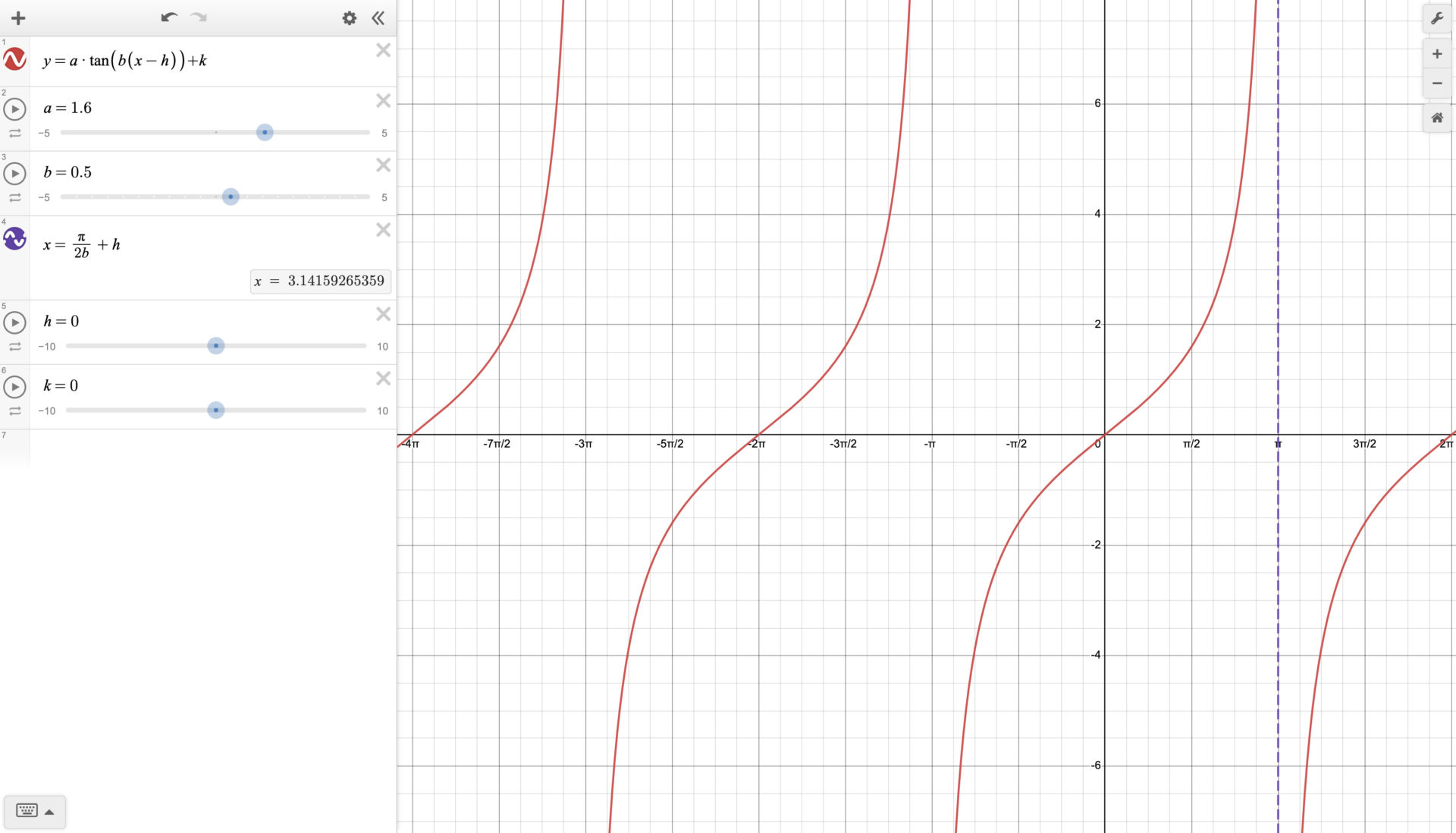Tan graphs are a type of graph that help to find the tangent function for a given range of angles.
They are usually represented as a series of points connected by lines, and can be used to identify specific angles and their corresponding tangent values.
They show the relationship between the tangent of an angle and the angle itself. The tangent of an angle is the ratio of the length of the side opposite the angle to the length of the side adjacent to the angle.
A tan graph is usually drawn as a series of points connected by lines, which makes it easy to identify specific angles and their corresponding tangent values.
What Tan Graphs Are And What They Show

They are helpful in finding the tangent function for a given range of angles. The tangent of an angle is the ratio of the length of the side opposite the angle to the length of the side adjacent to the angle.
A tan graph shows the relationship between the tangent of an angle and the angle itself.
How Tan Graphs Are Used
They show the relationship between the tangent of an angle and the angle itself, which can be helpful in solving problems related to trigonometry.
To utilise a tan graph, you first need to identify the angle that you want to find the tangent for. Next, find the corresponding point on the graph and read the value off of the y-axis. This is the tangent for that angle.
The Specific Applications of Tan Graphs in Trigonometry Problems
Tan graphs can be applied to a variety of trigonometry problems.
Some specific applications include finding the tangent for a given angle, solving problems related to inverse trigonometric functions, and finding the exact value of a trigonometric function.
A tan graph can be especially helpful in solving problems that involve inverse trigonometric functions.
Inverse trigonometric functions are applied to find angles when you know the value of the corresponding trigonometric function.
The tan graph may be utilised to determine the angle that corresponds to a given tangent value simply by drawing lines from the origin to various points on the curve. This is beneficial in terms of solving issues correctly and swiftly.
Additionally, a tan graph can be used to find the exact value of a trigonometric function. When you know the value of an angle and its corresponding tangent, you can utilise a tan graph to find the exact value of the trigonometric function.
How can you use a tan graph to solve a problem involving trigonometry?
When solving a problem involving trigonometry, you can use a tan graph to find the exact value of a trigonometric function.
When you know the value of an angle and its corresponding tangent, you can utilise a tan graph to find the exact value of the trigonometric function.
This can be helpful when trying to solve difficult trigonometry problems.
For example, let’s say that you are given the equation y = sin(x) + 1. You know that tan x is equal to 45 degrees, and you want to find the value of tan y when tan x is equal to 45 degrees. You can use a tan graph to find the exact value of y.
First, identify the angle that corresponds to 45 degrees on the tan graph. Next, find the corresponding point on the graph and read the value off of the y-axis.
This is the value of tan y when tan x is equal to 45 degrees. Therefore, y = sin(45 degrees) + 1 = 0.72 + 1 = 1.72.
A tan graph can be helpful in solving problems accurately and efficiently.
They can also be used to find the exact value of a trigonometric function, which can be helpful when trying to solve difficult trigonometry problems.
What is the importance of understanding how to use tan graphs in solving trigonometry problems?
The need to understand how to use a tan graph when solving trigonometry problems can’t be overstated.
A tan graph are an essential instrument for correctly resolving trigonometric situations.
Using a tan graph, you can easily determine the angle that corresponds to a given tangent value. This may help you solve issues correctly and quickly.
Additionally, a tan graph can be used to find the exact value of a trigonometric function.
When you know the value of an angle and its corresponding tangent, you can use a tan graph to find the exact value of the trigonometric function.
Therefore, understanding how to use tan graphs is essential for solving trigonometry problems accurately and efficiently.
Conclusion
A tan graph can be used in a variety of trigonometry problems, and are especially helpful in solving problems that involve inverse trigonometric functions.
By using a tan graph, you can easily identify the angle that corresponds to a given tangent value, which can be helpful when trying to solve difficult trigonometry problems.
Additionally, a tan graph can be used to find the exact value of a trigonometric function.
When you know the value of an angle and its corresponding tangent, you can use a tan graph to find the exact value of the trigonometric function.
Understanding how to use a tan graph is essential for solving trigonometry problems accurately and efficiently.
A tan graph is a valuable tool that can be used in a variety of trigonometry problems. If you understand how to use them, they can be helpful in solving problems accurately and efficiently.
So, the next time you’re stuck on a trigonometry problem, don’t forget to consult your trusty tan graph!
Be sure to check out more articles from SchoolOnline by heading to our GCSE Maths Foundation page to learn more about maths!
Frequently Asked Questions
Is tan y x or x y?
When the coordinates are expressed as a fraction, they’re known as Theta. The tangent of theta is y over x when y and x are substituted for these variables.
What does the tan function do?
The tan function takes an angle in radians and returns the ratio of the length of the opposite side to the length of the adjacent side.
Why is it called tangent?
The word tangent comes from the Latin word “tangens” which means “touching.” This is because a line that touches a curve at only one point is called a tangent line.
How do you find the tan of an angle?
There are a few different ways to find the tangent of an angle. The most common method is to use a calculator, but you can also use a table of values or a tan graph.
What is the inverse of the tangent function?
The inverse of the tangent function is the arctangent function. This function takes a ratio and returns the angle in radians that has that ratio.
What are the applications of the tangent function?
The tangent function has many applications in mathematics, physics, and engineering. It is used to calculate things like wave amplitude, velocity, and acceleration. It is also used in navigation and astronomy.
How do you graph the tangent function?
The tangent function can be graphed by hand or with a computer program. To graph the function by hand, you will need to use a table of values or a tan graph. If you are using a computer program, you will need to input the equation into the program and then graph it.
How is tan calculated?
The tangent of an angle is the ratio of the length of the opposite side to the length of the adjacent side. This can be calculated by using a calculator, a table of values, or a tan graph.
Does cotangent go to positive infinity to the left of Zero and negative infinity to the right?
No, the cotangent function does not go to positive or negative infinity (left or right) of Zero. The cotangent function is undefined at Zero, but it approaches infinity as the angle approaches Zero from the left or right.
Is tangent a polynomial?
No, the tangent function is not a polynomial. It is an irrational number that cannot be expressed as a rational number.
What is the domain of the tangent function?
The domain of the tangent function is all real numbers except for Zero. This is because the tangent function is undefined at Zero.
What is the range of the tangent function?
The range of the tangent function is all real numbers.


